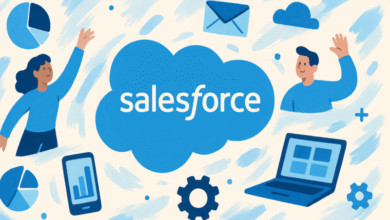AI-Powered ABM: The Strategy-Led Future

▼ Summary
– Account-based GTM aims to align marketing and sales around high-value accounts with personalized engagement but faces execution complexity and outdated metrics.
– ABM is evolving to become the core of marketing strategy, replacing traditional lead-based funnels with account-focused approaches starting from a total account list.
– Execution challenges include over-reliance on vendor playbooks, leadership gaps, and lack of formal operating models, especially for one-to-many ABM programs.
– AI enables scalable ABM execution by automating research and campaign creation but risks generating irrelevant noise without proper strategy and segmentation.
– Marketing leaders must shift from lead-based metrics to revenue-focused accountability and embed themselves in strategic planning to reclaim influence.
The evolution of account-based go-to-market strategies represents a fundamental shift in how B2B organizations approach revenue generation. Account-based marketing (ABM) is no longer a niche tactic but has become the core of modern marketing, especially in complex, high-value sales environments. The traditional lead-generation model, focused on volume and MQLs, often creates misalignment between marketing and sales, rewarding activity rather than actual business impact. Today’s most successful organizations recognize that effective ABM requires a strategic, portfolio-based approach to targeting, engagement, and measurement.
Davis Potter, CEO of ForgeX, emphasizes that in high-stakes B2B selling, all marketing should inherently follow account-based principles. He notes that buying groups have always been central to ABM, though many vendors still present it as a novel idea. The outdated MQL-driven funnel encourages marketing to prioritize quantity over quality, leading to a misalignment where sales teams receive leads that may not be truly sales-ready.
A more effective approach begins with a Total Addressable List (TAL), built from a well-defined ideal customer profile that incorporates firmographics, technographics, buying triggers, and historical success patterns. Potter’s Account-Based Arrow model segments this list into strategic tiers. Enterprise accounts receive highly tailored one-to-one attention, while a broader growth ABM tier applies targeted messaging to a larger audience, akin to managing an investment portfolio with varying risk and return profiles.
Yet even the soundest strategies often stumble during execution. Many companies struggle to move beyond pilot programs, hampered by an over-reliance on vendor playbooks, leadership gaps, and the absence of formal operating models for one-to-many ABM. Potter warns that concentrating too heavily on a handful of high-value accounts can be risky, especially if those opportunities fail to materialize.
The persistent focus on MQLs further undermines ABM’s potential. Metrics like buying group engagement and pipeline influence lack standardization, and ownership between sales, marketing, and RevOps is often unclear. Marketers must learn to speak the language of finance, tying ABM performance to revenue, lifetime value, and overall business impact, or risk being relegated back to lead-generation duties.
AI introduces both promise and peril into this landscape. Elaine Zelby, CRO and co-founder of Tofu, observes that AI can scale what was once manual and labor-intensive, turning signals from platforms like 6sense into fully developed campaigns with contextualized assets. This allows marketers to focus on strategy rather than execution. However, she cautions that automation without strategic discipline can lead to irrelevant, spam-like communications that damage brand reputation.
Both leaders agree that strategy must precede technology. Without a clear understanding of go-to-market fundamentals, including sales territories, pricing, and packaging, no amount of technology will enable scalable ABM execution. Similarly, effective account selection depends on recognizing meaningful signals, such as new tool adoption, key hires, or competitive renewals.
Ultimately, the role of marketing leadership is evolving. To regain influence in revenue conversations, CMOs must transition from campaign managers to business leaders, collaborating closely with sales on account planning and communicating in terms of revenue impact rather than lead volume. As AI handles more executional tasks, marketers are freed to become strategists, using tools to drive smarter, faster, and more relevant engagement rather than fearing replacement.
(Source: MarTech)





